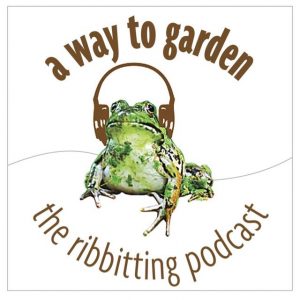WAIT: BEFORE YOU FIND yourself at the garden center, grabbing up every irresistible thing that calls out to you, figuring you can somehow find a role for it in this season’s container designs, think again. What’s your plan for this year’s seasonal pots—or is there a plan?
That was the topic of my conversation with David Mattern, horticulturist at Chanticleer Garden in Pennsylvania, who has some container garden design advice to share.
David has gardened for 10 years at Chanticleer in Wayne, Pa., where he oversees the vegetable garden and lends his creativity to other aspects of this world-class landscape, too, including Chanticleer’s many inspired vignettes of seasonal containers.
Read along as you listen to the March 25, 2024 edition of my public-radio show and podcast using the player below. You can subscribe to all future editions on Apple Podcasts (iTunes) or Spotify (and browse my archive of podcasts here).
(Portrait of David, below, by Lisa Roper for Chanticleer. All other photos by David Mattern for Chanticleer.)
 inspired containers, with david mattern
inspired containers, with david mattern
Margaret Roach: Welcome back, David. It’s nice to speak to you. We’re not going to talk about vegetables today?
David Mattern: Yeah. Not this time. It’s wonderful to be back, but thank you.
Margaret: The last couple of times, a few years ago, we talked about vegetables and putting the vegetable garden to bed, and picking new vegetables from the seed catalogs and things like that. But I recently read your article on container gardening in the 2024 “Old Farmer’s Almanac Garden Guide” magazine, and I loved reading about your thought process, which is what we’ll talk about. And then just a couple of weeks ago, seeing the photos of your empty pots all out on display on Instagram. It was like you staged them, but there’s nothing in them. So, tell us about that. Is that the starting point of the process?
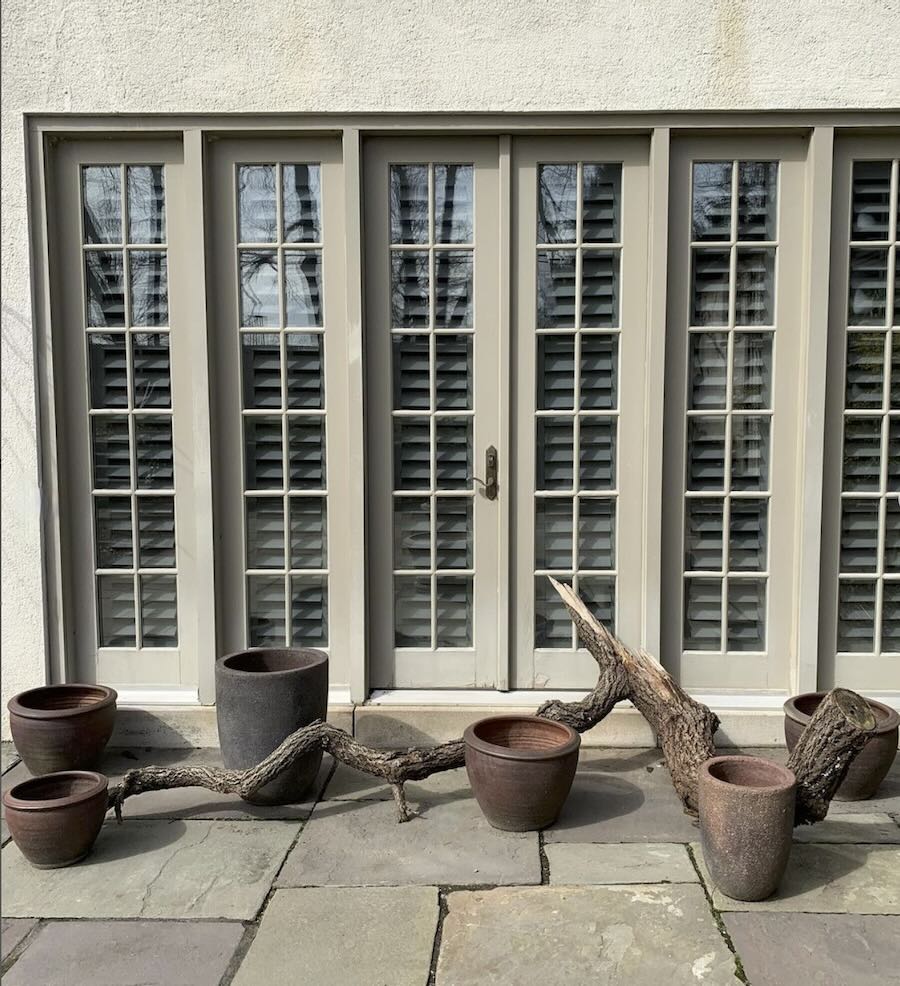
So, late winter is the beginning of my container-design process, because you can see the bare bones of your garden, of your landscape, and where things are. I’ll start to set my containers out empty, just to see how they’re influencing the space, how they’re creating a sense of feel of what I’m trying to do, what my intent is in that space.
The nice thing about that is containers that are empty are a lot lighter [laughter]. So, any reduction in back strain in the garden, I’m all for it. But it’s a nice way to play around and get a sense of the space. If the containers are set out, even when they’re empty, they should have an impact. They should start to create that feeling or intent that you’re looking for. So, when they’re planted up, they feel a little bit more integrated into your landscape and not just plunked in there.
Margaret: So what could be some of the intentions that you could start to formulate with…? I am assuming you put them out in your best guess of where you want them, and then maybe-
David: It does take some time.
Margaret: … you’re going to fiddle around with them a little bit before the potting up stage comes and get the vignettes or the placements right. So, what could be some of the purposes of those placements? What can containers, well-placed, do in a garden?
David: Yeah. I’d say think of what your intent is. The beauty of containers is you can move them around and change them. Some people will use things for using containers as screening or as accent features. Containers can really draw attention to themselves. So, using them to indicate a transition from one garden space to another, or indicate where the front door is, or even just creating an intimate space within a larger space, so on your deck or around a sitting area.
Just thinking of that intent will indicate how you’re going to start to cluster things together. Or maybe it’s not a cluster of containers, maybe it’s one big container that you want to accent a long view out into the garden.
Margaret: The shapes of pots—I mean, I have four really, really, really big, they’re about maybe almost 3 feet across, low terracotta bowls, and they’re my signature pots. They’re the pots I’ve had for the longest, and it’s a ritual day every late winter when they go out, empty, to their spots and so forth. They’ve always been in the same four spots [laughter]. You make me think of a new place. So, I love low bowls and this big dish kind of feeling.
But different pots, different shapes and scale and so forth also affects the impact. Do you have favorite shapes, or do you mix up shapes that you like together? Do you a really tall thing with a low thing? Should we be thinking about that?
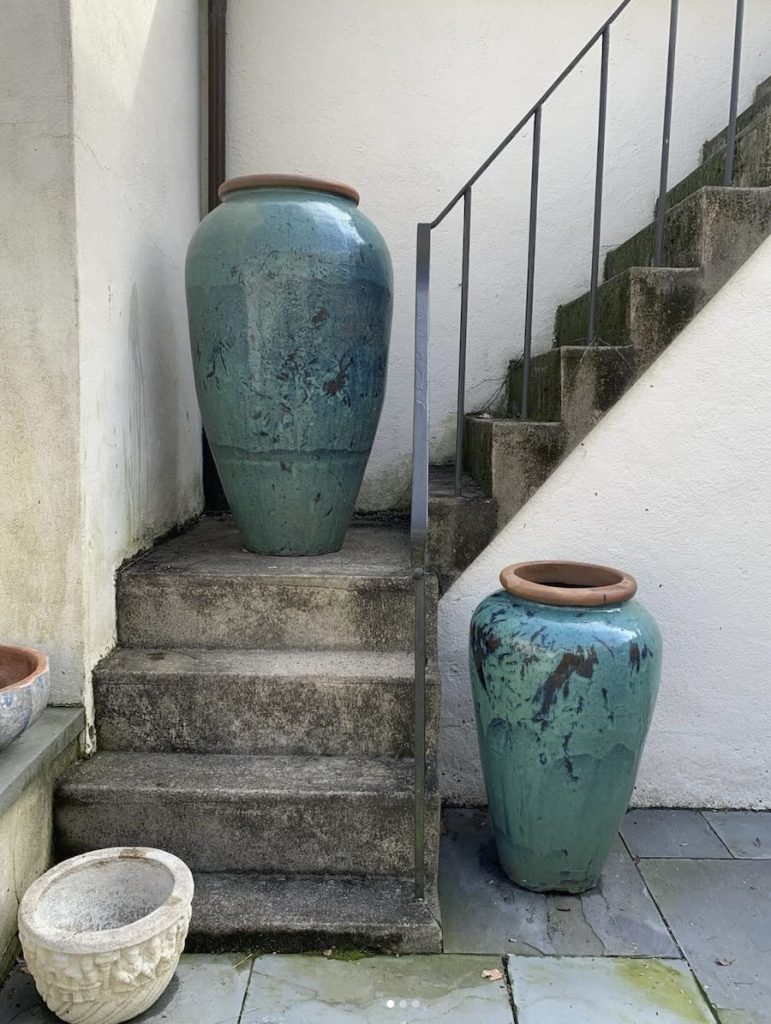
And then there’s glazes, like I said, that can add to the color. If you’re looking for a big accent, I call them exclamation points in the garden, something that’s really going to draw attention to yourself or a long view, that’s where big, big glazes and really strong shapes can really help out there. Like big vase-shaped containers, or even something bold, something very architectural in contrast to everything else in your garden.
Margaret: Right. The glaze thing is a big, big deal because even a small glazed pot really stands out. I have one that’s a beautiful green glaze, and I just love putting it on the table on the patio and it just catches your eye. Even though there’s other pots all around, groups of pots all around, this one just really calls to you. It’s just that little bit of color. It’s a little something extra.
David: Especially in spring, I find glazed containers can really pop. Sometimes I like to pair some of my glazed containers with some really simple terracotta colors or something, almost to emphasize that glaze, the color on them. So, I’ll have just a few simple glazed containers, two or three, but then I’ll have an array of different terracottas as a backdrop to that.
Margaret: So, eventually we do get to put plants in them [laughter]. But not just annuals. At Chanticleer you really call in a lot of different kinds of plants into the design of your containers. So, tell us about some of the range of what might find its way into a pot there.
David: Oh, yeah. I say don’t limit yourself. I think the more you can expand your palette and add to the diversity of your containers, the more interesting they are. A lot of different things can work. Usually with small trees or shrubs we’ll use as big accents in the container, and other things like perennials and grasses and other herbaceous material. It is a fun way to integrate those in with some annuals around your container. I particularly like using perennials in my containers, because those are the perennials that I then plant out into the garden afterwards. It’s a nice way to stretch my plant budget.
I will start there. I’ll start with perennials that I know I want to add into my garden. But before I do that, I’ll use them in a container for the first season, mixed in with annuals and things. Then in the fall, when I’m ready to dismantle my containers and get ready for winter, I’ll plant them out into the garden, and then go in that two-cycle process. So, it’s just a fun way to use a diversity of material, even if it’s things I’m going to use, and a nice way to repurpose some of the material that you’re using in your containers. Like I said, always good to stretch the budget [laughter].
Margaret: You said perennials, and you said woody plants as well, maybe trees and shrubs. I love things like Japanese maples in pots. One of the tricky things is that—and I have a lot of them that I’ve had for a long time—is that they get tucked in the garage in the winter because I’m in a slightly colder zone where they can get beat up, and the pots would certainly get beat up outside. One of the tricky things is figuring out if you want to have something as a groundcover beneath them, is it also has to be something that can take that treatment, if it’s a perennial. One thing I found years ago quite by accident, and it has just been the most wonderful thing, is that Sedum, that gold Sedum called ‘Angelina.’ It’s just a real prostrate, really groundcovering one.
David: Beautiful.
Margaret: I mean, it just makes this… It’s 365 days [laughter]. I can open the garage door in December, and it’s like gleaming gold in there, a beautiful plant. I mean, it doesn’t miss a beat. So, something as simple as groundcover-y Sedum could finish off a big pot of a woody plant and be almost like a permanent pairing. When I say permanent, I don’t mean 100 years [laughter].
David: Yeah. I really like a lot of little minor bulbs, like Scilla and Chionodoxa and Muscari, tucked into some of my woody containers because they are a bit of commitment. I mean, woody plants and containers are more of a permanent thing. Their root systems can potentially get compromised being in the container, so you wouldn’t necessarily want to plant them out. But they’re fantastic, like you said, to take them into the garage for winter and then bring them out again. And other little natives like Houstonia, that-
Margaret: Oh, the bluets.
David: I’ve seen those work really effectively, really beautifully. Particularly in little bonsai containers as well. It’s in that scale.
Margaret: Yeah. That’s a great idea. The little bluets, I love them. They’re adorable.
David: Anytime I can integrate native spring ephemerals into any of my containers, I’ll do it. They’re some of my favorite plants to work with.
Margaret: At Chanticleer, you guys have fun also with containers, like you’ll have containers with water and float flowers in them and things like that, don’t you?
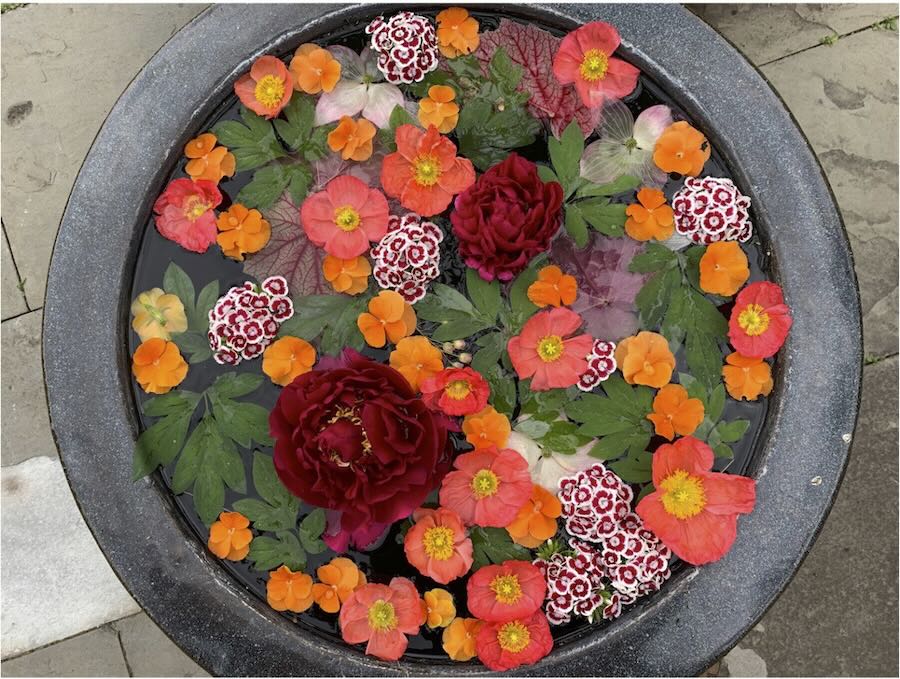
So they’re very fleeting, and you really see the transition of the seasons. I think they’re a really fun study in color and texture and form. You can have a walk around your garden and see all the different colors, maybe of the foliage or of what’s flowering, and see what they look like together in a bowl. I really enjoy them; I tend to have a lot of our interns working on that because I think it’s a good study in garden design, thinking about form and space and texture and all that good stuff.
Margaret: You also use some prunings from elsewhere in the garden, don’t you? Don’t you use some branches and twigs and so forth? Almost like someone might use in a floral arrangement, so to speak?
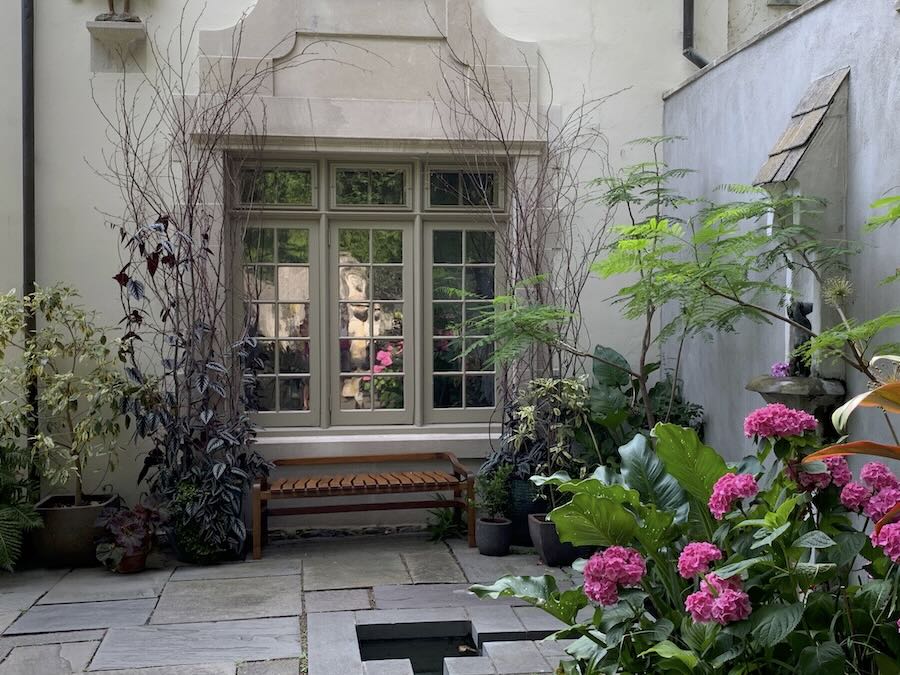
Really it’s just repurposing what you have in your garden, and it’s fun to just look in your own garden and see what kind of things you have that you can integrate back into your containers for your new seasons to play. It’s a fun challenge. So, we’ll use that a lot. Particularly that carries through the season as well, using them for trellising for annual vines, and things like that. I find when I’m doing that, adding sticks as a structure, it shows that intent initially of this will get big, this little begonia vine that’s just at the base of my container. It eventually will take over. But initially just having that framework there really shows that off.
Margaret: It implies what’s to come. That’s a good idea. When it’s time to design plant-wise, do you start with the key plant? I mean, there’s all those formulas like, what is it?— “spiller, thriller, filler,” and all kinds of ways to make us think about design in pots. But do you begin with, you’ll have your grouping and you love where the empty pots, how it’s working, then do you start visualizing, “Hey, I think this is where I have this banana and I’m going to bring it and put it in this pot, that pot, in that group?” Then what happens next, when you get to the plant-choice thing? Again, I know it’s subjective, but… Yeah.
David: Well, that’s the fun part, right? [Laughter.] Yeah. I always say there’s all these recommendations you can follow with things like that, and plants are what bring your containers to life, so embrace that. You can follow any kind of rules. I’m just trying to collect my thoughts here. For me, I think if you’re going for a bold accent for a container, think about something like a banana, or something that’s going to complement that sort of bold intention. So, something with big foliage or strong architectural foliage. But when you’re at a garden center, it can be really—maybe overwhelming isn’t quite the right word, but your eyes certainly are bigger than your stomach.
So, I always say, start with one key plant. Start with the one thing that you see, maybe it’s something you read in an article or you’ve seen before or you really enjoy growing. Start with one plant that you really like and build off of that.
So, that’s my one plant that’s going to go in my container. What can I add to that container that’s going to enhance my first plant that I’m adding to it? Is it adding more color, some complementary color, or is it adding a textural difference, or is it adding some height, or is it adding something softer or bolder in contrast to that one thing that you start with? I find it’s a good way to get yourself on a track, instead of just getting one of everything and then you have something a little more chaotic as a result.
Margaret: Yes. Sometimes the one that you start with, sometimes it’s… Because for me, I love foliage—and I want to talk about that in a minute because I know foliage is so important. It’s not all about flowers in these pots at Chanticleer. I can see a leaf of something that’s really beautiful in the garden center in spring, there could be this… What do they call it, the copper leaf plant, Acalypha, or even a Coleus with intricate leaf color or color combination in the leaf. Then I could be marching around the garden center for an hour, looking for things that go with that palette, so to speak, as if the leaf is telling me what my design is going to incorporate. It’s like that’s my inspiration. Just one leaf can do it for me [laughter].
David: Yeah. Sometimes I’ll just be holding the plan and just walking around and holding-
Margaret: Me, too.
David: … others, “O.K., is that going to work? Is that going to work?”
Margaret: [Laughter.] We should shop together. We would be a good pair.
David: Yeah, that’d be great. Yeah.
Margaret: Oh. So, foliage. Yeah. Foliage is important, right? I mean, we shouldn’t just go shopping for the flowers, flowers. I mean, I know the Calibrachoa section or the Petunia section are the biggest, and they’ve got a billion of them in all those colors, but that’s not the whole story, is it?
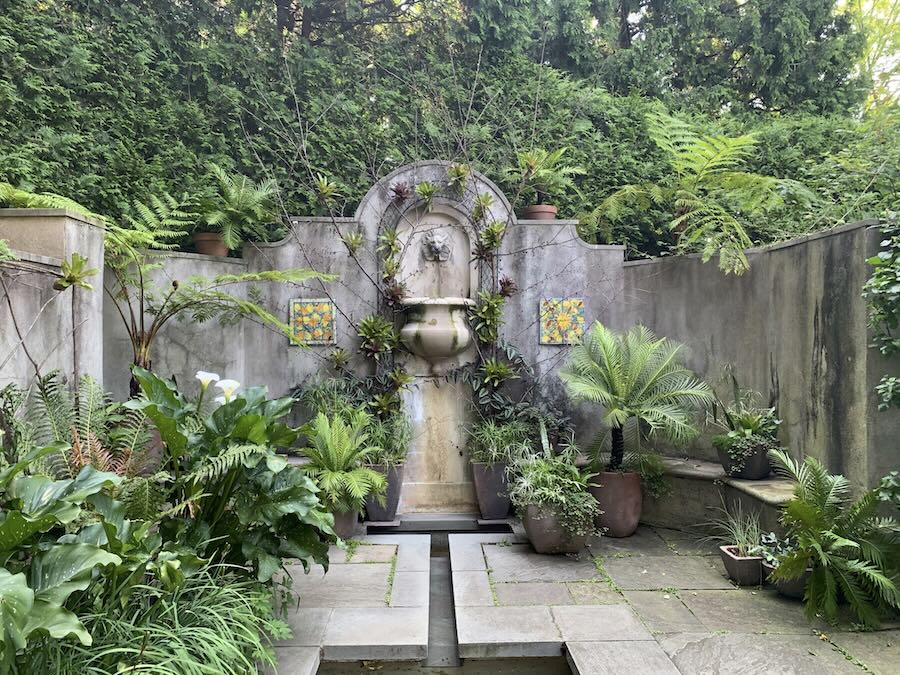
So, the possibilities are endless. Like I said, it’s really more about, don’t overthink it. Have fun with what you’re seeing and what you’re doing, and don’t be afraid to try something new, because that’s how we learn. It may not work all the time [laughter], every time, but take notes and build off of your successes.
Margaret: Do you guys do any bulbs? I love the pineapple lilies, the Eucomis, for instance. Do you do bulbs in pots as well? You talked about some minor ones, like seasonal minor ones that we would think of more as perennials and so forth, but do you plant any pots of bulbs for the summer?
David: Absolutely. That’s something we’ll do in the fall as part of when we do our fall bulb planting, we usually end up planting a lot of our containers with bulbs as well to get ready for the season.
I always tend to, if I am planting a bed of tulips in one of my seasonal display beds, I’ll usually set aside 10 or so of those bulbs from that planting, and then I’ll pot up two containers. Just some simple tulips in a simple terracotta, and overwinter them in our cold frames. Then in the spring, I can set those out next to my bed. So, my containers on my terrace match, sort of pair, with my display in the beds. It’s a nice way of harmonizing your planting beds with all of your containers on the terrace. So, it’s fun to work that way.
Margaret: It really underscores the bigger message, doesn’t it? Just those two little pots just really underscore the bigger planting.
David: Yeah. It’s just a nice thing to just set those aside in the fall. Potting up bulbs in the fall is always a wonderful feeling, too, because it’s that first step at getting ready for spring and that anticipation. So, we really enjoy that.
Margaret: Right. Are there certain plants that you can’t imagine being without in the container designs there? For those of us who want to maybe make some investments this year, and I loved seeing in the… I can’t remember exactly which week or month it was. But when you all were—it might’ve been last year—trotting it out, when all the goodies were starting to come out of storage, all the tender things were starting to get… And Chanticleer has such an incredible wealth of treasures, what I call “investment plants,” things that I stash in my cellar, which pale by comparison to what you all have. But are there things that if we’re going to go and go shopping and get seduced by something [laughter], that we could get a lot of mileage out of, a lot of years out of, a lot of oomph out of do you think, that can work in our containers for years to come—that you’d recommend we take a look at that department in the garden center?
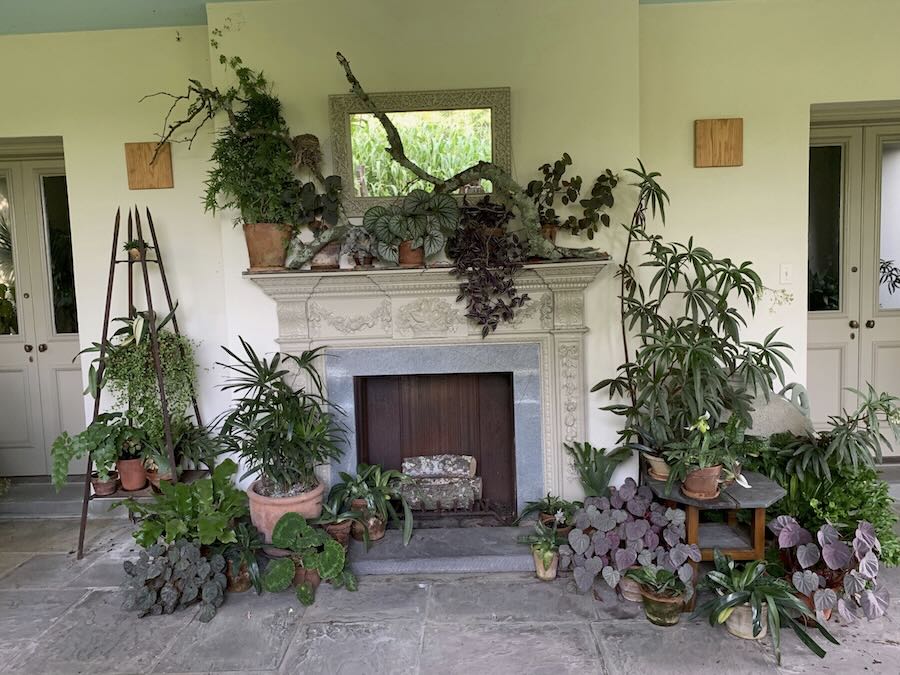
Margaret: I know you have some great Abyssinian bananas and other banana type things. I believe I’ve seen pictures that you use, maybe not in containers—well, some may be in containers, but also you use in your borders and so forth. They can be great.
David: Yeah. When I think about bananas as you take the whole culm, the whole root system, and bring that in, and they can transplant really well. So, we can have them in the ground one season, we can have them in a container one season, and they’ll grow out, so they’re fun to bring in and out and use in a diversity of ways. They tend to be really forgiving that way.
Margaret: Yeah. Do you do swap outs? Do you do early pots, and then summer pots, and then fall pots? Or do you gradually tease things out and add things in and evolve each design—or all of the above?
David: Oh, yeah. I mean, part of gardening is embracing the seasonality of what’s happening at one time, and things coming in and out of bloom and color and texture. I think for us, it’s very much an evolution through the season. So, we open to the public officially next Wednesday, March 27th, and we’ll be open through October. So, it starts with a lot of tulips and bulbs and spring annuals in containers. As the temperatures start to warm up, I’m slowly sort of piecing some things in and pulling some things out. So, just picking things in and out, and it’s a slow transitional process. The goal is to have it like, “Oh, it’s just happening all on its own, isn’t it?”
Margaret: Oh, right [laughter].
David: Bit of transitioning.
Margaret: Yeah. Nobody has to do anything, right, David? [Laughter.]
David: Yeah. Yeah. It all just happens. Isn’t that wonderful?
Margaret: It’s amazing. Well, David Mattern, I’m so glad to talk to you, and I can’t wait to see pictures of the pots as they show up on Instagram, on the Chanticleer one and on your own.
David: Thank you.
prefer the podcast version of the show?
MY WEEKLY public-radio show, rated a “top-5 garden podcast” by “The Guardian” newspaper in the UK, began its 15th year in March 2024. It’s produced at Robin Hood Radio, the smallest NPR station in the nation. Listen locally in the Hudson Valley (NY)-Berkshires (MA)-Litchfield Hills (CT) Mondays at 8:30 AM Eastern, rerun at 8:30 Saturdays. Or play the March 25, 2024 show using the player near the top of this transcript. You can subscribe to all future editions on iTunes/Apple Podcasts or Spotify (and browse my archive of podcasts here).



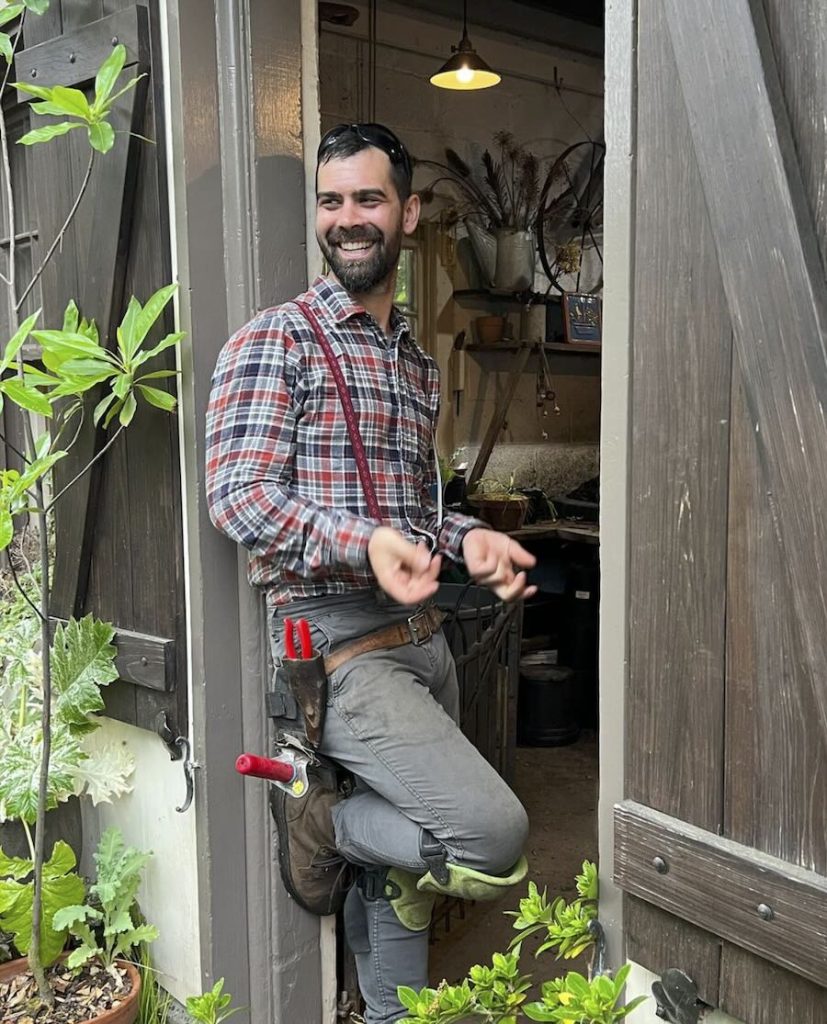 inspired containers, with david mattern
inspired containers, with david mattern